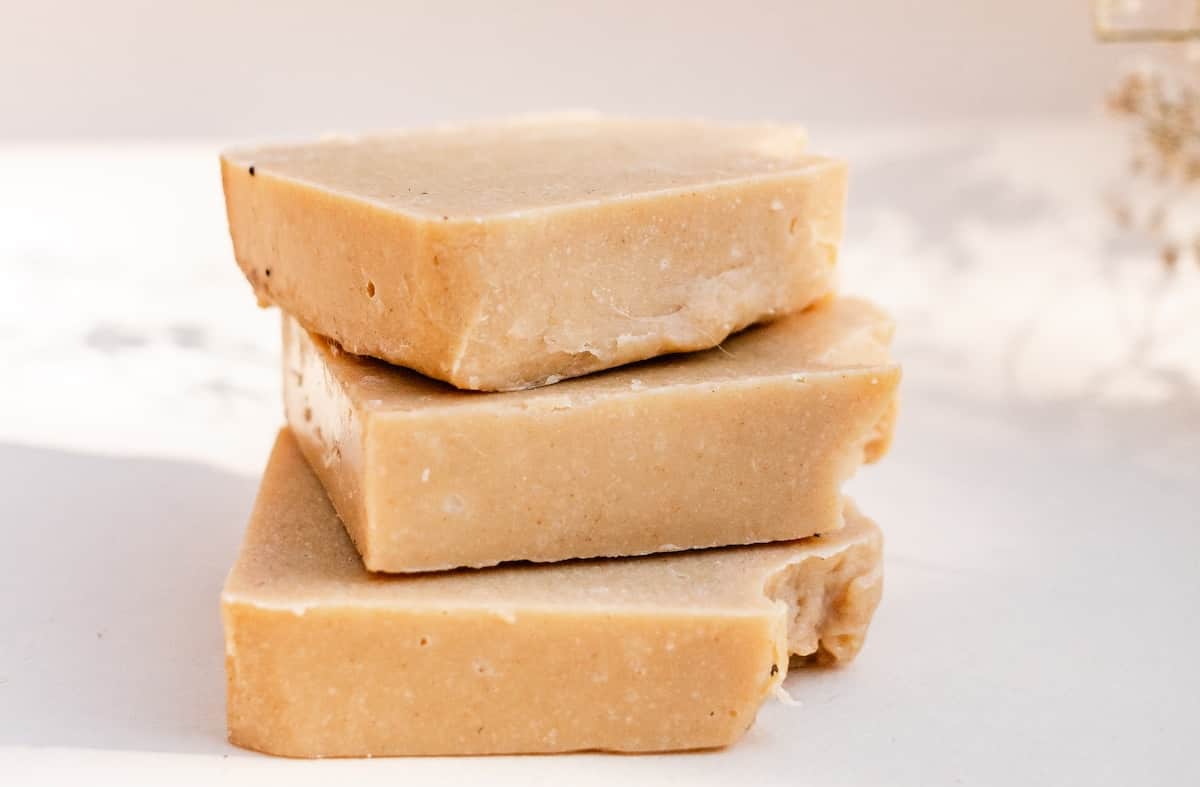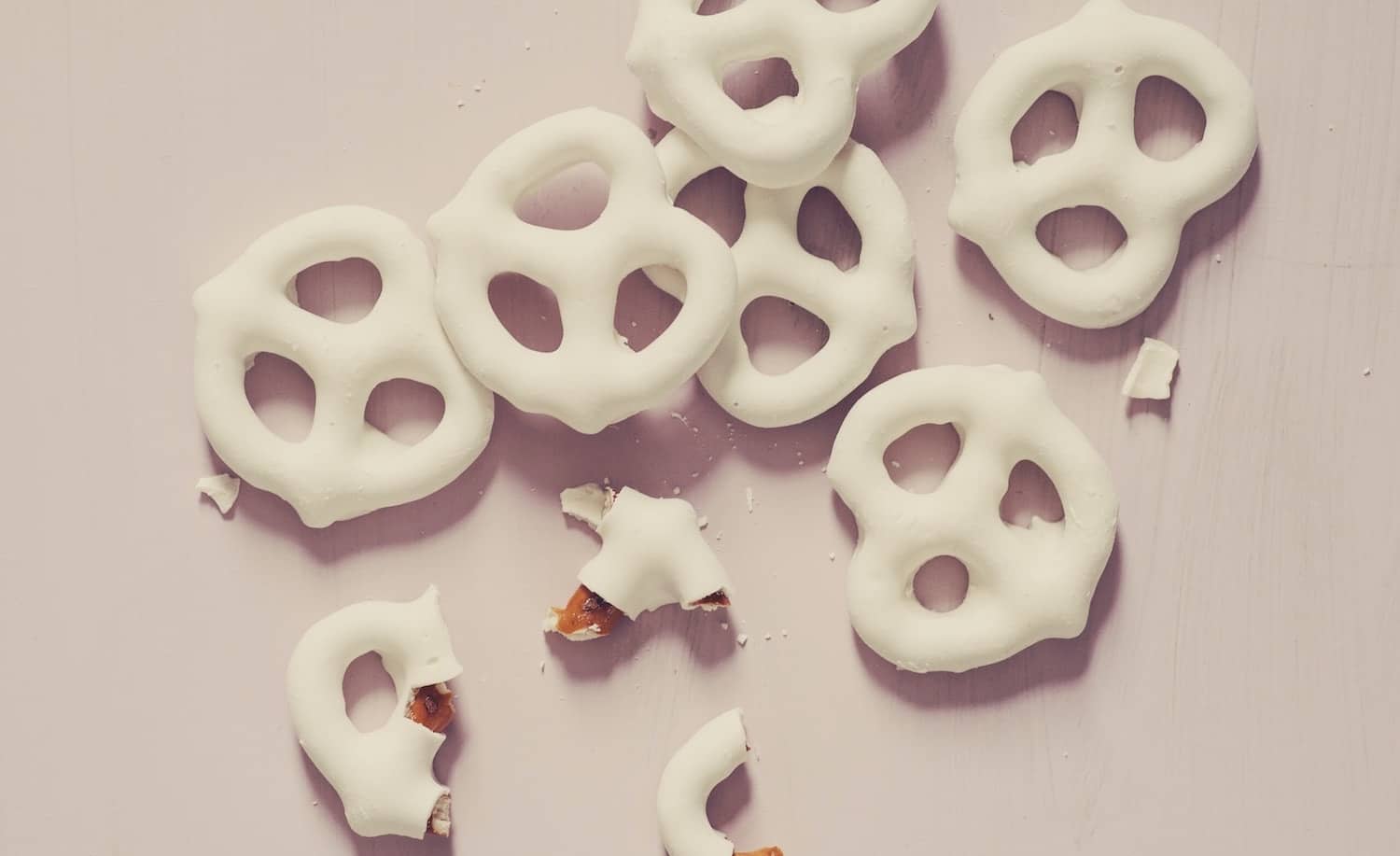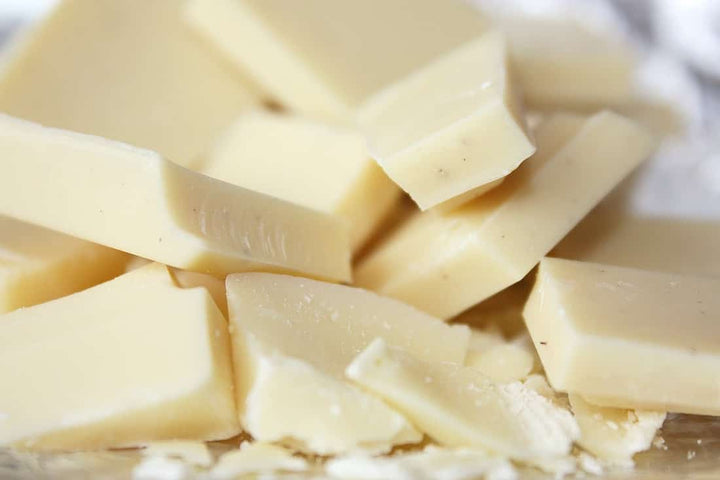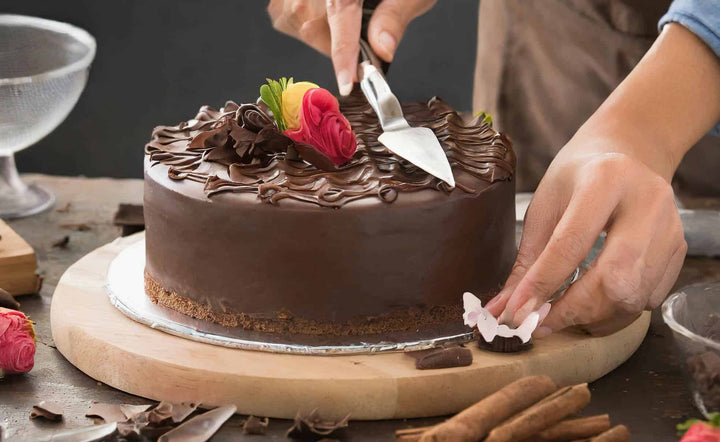White chocolate, known for its creamy texture and sweet, buttery flavour, is a delightful ingredient in many confectionery creations.
However, melting white chocolate can be challenging due to its high sugar and milk content, making it more prone to seizing and burning than its dark or milk counterparts.
In this post, I will guide you through the nuances of melting white chocolate, ensuring a smooth, flawless result.
From choosing the right type of white chocolate to mastering the gentle heat technique, I will cover all the essential tips and tricks.
How to Melt White Chocolate in a Saucepan
To melt white chocolate in a saucepan, use a double boiler method.
Fill a saucepan with a couple of inches of water and bring it to a gentle simmer.
The white chocolate is broken into small, even pieces in a heatproof bowl that fits snugly over the saucepan without touching the water.
As the steam heats the bottom of the bowl, stir the chocolate frequently until it's completely melted and smooth.
Ensure the chocolate doesn’t come into contact with water or steam, which can cause it to seize.
Here's a step-by-step guide to melt white chocolate in a saucepan:
-
Choose a Suitable Pan: Opt for a heavy-bottomed saucepan as it provides even heat distribution, reducing the risk of burning.
-
Chop the White Chocolate: If you're using a bar, chop it into small, even pieces. This ensures uniform melting and prevents the chocolate from burning.
-
Use Low Heat: Place the saucepan on the lowest heat setting. White chocolate is sensitive to high temperatures.
-
Stir Constantly: Add the white chocolate to the pan and stir constantly with a silicone spatula. This continuous movement helps to distribute the heat evenly and prevents the chocolate from sticking to the bottom of the pan.
-
Monitor the Heat: Keep a close eye on the chocolate as it melts. If it appears to be heating too quickly or starting to burn, remove the pan from the heat momentarily while continuing to stir.
-
Achieve Smooth Consistency: The goal is to melt the chocolate to a smooth, creamy consistency without any lumps. If the chocolate seems too thick, add a teaspoon of coconut or vegetable oil to thin it out.
-
Remove from Heat: Once the chocolate is fully melted, remove the saucepan immediately to avoid overheating.
-
Use Immediately: Use the melted white chocolate promptly in your recipe. If it begins to harden, you can briefly reheat it, but be cautious not to overheat.
Remember, patience is critical when melting white chocolate.
Using low heat and constant stirring, you can avoid the common pitfalls and achieve a perfectly melted, smooth white chocolate for your culinary creations.

How to Melt White Chocolate in a Microwave
To melt white chocolate in a microwave, break it into small, uniform pieces and put them in a microwave-safe bowl.
Heat on medium power for 20-30 seconds, stir, and then continue heating in 15-second bursts, stirring after each interval, until the chocolate is completely melted and smooth.
Lower power and shorter heating times are essential, as white chocolate can burn faster than other types.
How Can You Fix Seized White Chocolate?
Fixing seized white chocolate, which occurs when moisture comes into contact with the melting chocolate, resulting in a grainy and thick texture, can be challenging but not impossible.
Here are steps to remedy seized white chocolate:
-
Add Fat: The most common method to rescue seized white chocolate is to add a fat source. Gradually stir in fat like vegetable oil, clarified butter, or cocoa butter. Start with a small amount, such as a teaspoon, and add more as needed. The fat helps to loosen the chocolate mixture and bring back some of its fluidity.
-
Gentle Heat: Keep the chocolate over low heat while adding the fat, or use a double boiler. The gentle heat will help distribute the added fat and smooth the chocolate evenly.
-
Stir Constantly: Continuously stir the mixture to incorporate the added fat evenly and prevent further seizing.
-
Adjust Quantity for Recipes: If you manage to fix the seized chocolate, be aware that the added fat might affect the final consistency of your recipe. This means the chocolate might not be set as it would be.
-
Use for Alternate Purposes: If the texture of the chocolate isn't perfect but still usable, consider changing its intended use. For example, use it in recipes where the exact texture of the chocolate isn't crucial, like frostings, chocolate sauces, or baking.
Remember, prevention is the best approach.
Ensure all utensils and the bowl are completely dry before melting, and avoid contact with water or steam.
However, if seizing does occur, these steps can help salvage the chocolate for most uses.

What is the Melting Point of White Chocolate?
The melting point of white chocolate typically ranges from about 37°C to 43°C (98°F to 110°F).
This range is slightly lower than that of dark or milk chocolate due to the different compositions of white chocolate.
It contains cocoa butter, sugar, milk solids, and often vanilla, but lacks cocoa solids found in other types of chocolate.
The high content of cocoa butter and milk solids in white chocolate is why it melts at a lower temperature and requires extra care when melting to prevent it from burning or seizing.
It's essential to melt white chocolate slowly and at low temperatures, either in a microwave or using a double boiler, to ensure a smooth, even melt.
Where Can You Buy the Best White Melting Chocolate?
You can find some of the best melting chocolate with Whitakers easymelt products, such as our Dark Chocolate 55% Couverture Chocolate Mini Shards.
These mini shards are designed for easy and efficient melting, making them ideal for various culinary applications where smooth, high-quality melted chocolate is desired.
Some Notes From an Expert Chocolatier
As an expert chocolatier, I can't stress enough the unique nature of white chocolate and the importance of treating it differently when melting.
Unlike dark or milk chocolate, white chocolate’s composition is primarily cocoa butter, milk solids, and sugar, without cocoa solids.
This unique blend makes it more sensitive to heat and prone to burning or seizing.
Thus, it requires a gentler and more patient approach.
Melting it slowly and at a lower temperature and stirring constantly is key to achieving that perfectly smooth, creamy consistency.
Recognising and respecting these differences is crucial in chocolate making, especially when working with white chocolate's delicate and distinct character.
Final Notes On Melting White Chocolate
While slightly more challenging than its darker counterparts, melting white chocolate can be mastered with the right approach and attention to detail.
The key is to understand and respect its unique composition, requiring lower temperatures and gentle handling.
You can achieve a perfectly smooth and creamy consistency by melting it slowly, using low heat, and stirring constantly.
This delicate process not only preserves the subtle flavours and texture of white chocolate but also ensures a successful outcome in your culinary creations.
Whether making a decadent dessert or a simple drizzle, mastering the art of melting white chocolate is an invaluable skill in confectionery and baking.
Patience and careful technique are your best allies in working with this exquisite ingredient.











